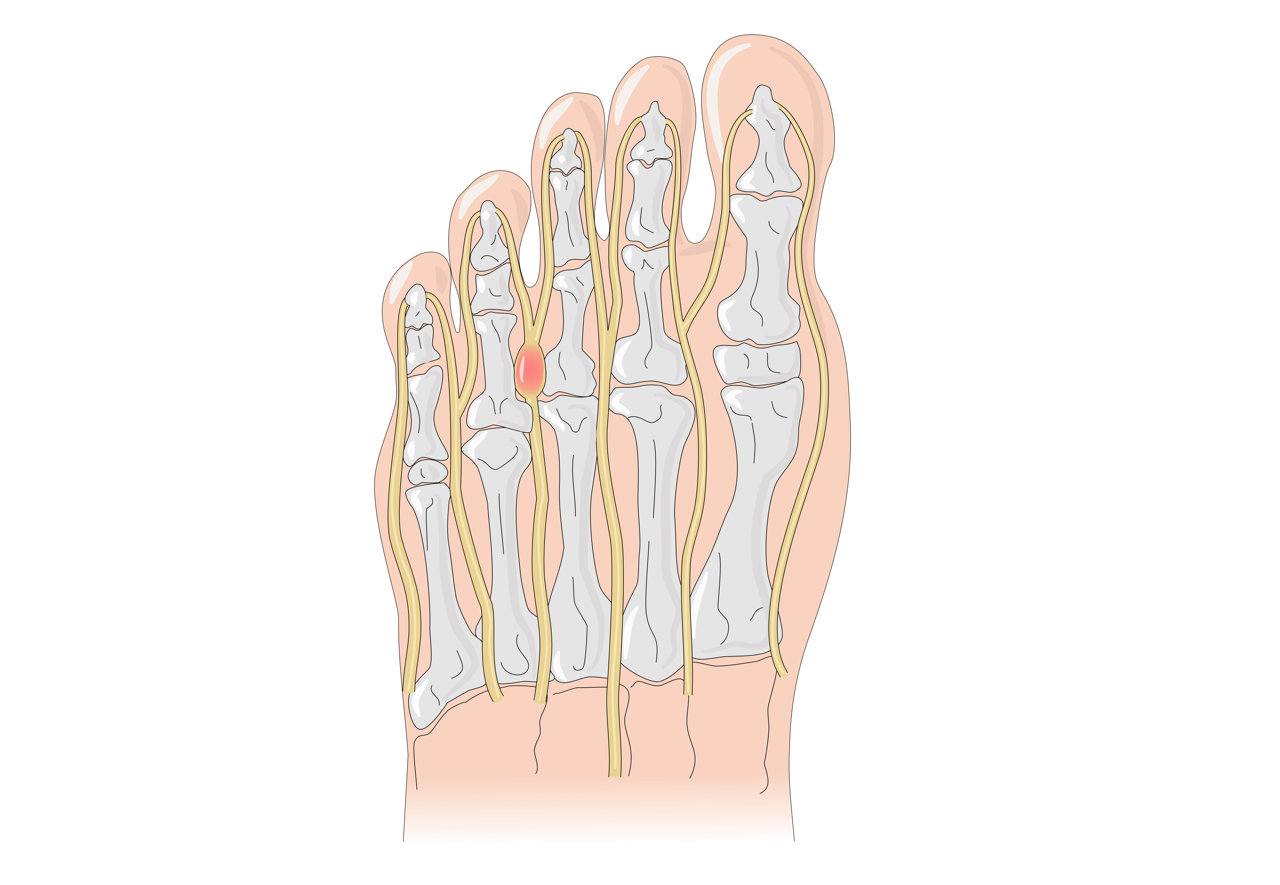Do you often feel pain in the ball of your foot? Does it feel like there’s a pebble stuck in your shoe that’s putting pressure on your foot? If so, Morton’s neuroma could be the culprit.
Morton’s neuroma is a painful condition that affects the ball of your foot, specifically the area between your third and fourth toes. It is caused by the thickening of the tissue that surrounds one of the nerves leading to your toes.
This results in a sharp, burning pain in the ball of your foot. Your toes may also be affected and may burn, feel numb or sting.
What are the causes?
The most common reason for Morton’s neuroma is wearing high-heeled shoes. These shoes can cause the nerves in your feet to become irritated or compressed. Over time, the nerves thicken and become more painful from the pressure of the shoe.
Other reasons include abnormalities in the way that you walk, or in the way your foot is structured which can place further strain on the nerves in your feet.
What are risk factors?
Factors that may contribute to Morton’s neuroma include:
- Certain sports. High-impact sports like jogging or running can place constant pressure on your feet, especially if shoes are ill-fitting.
- A bony bump that forms on the joint at the base of your big toe.
- Hammer toes. A deformity that causes your toe to bend or curl downward instead of pointing forward.
- A high arch or flat feet. This gives you a higher risk of developing Morton’s neuroma.
Treating Morton’s neuroma
Morton’s neuroma treatment depends on the severity of your symptoms. Home treatments are often used first while if your condition is more severe, more aggressive treatment will be necessary. Many people find quick relief by choosing to wear shoes with lower heels with wider toe boxes.
Home treatment options:
- Arch support pads in your shoes to relieve pressure on your foot’s nerves. Check at your pharmacy for over-the-counter (OTC) ones.
- OTC painkillers or nonsteroidal anti-inflammatory drugs for pain and inflammation.
- Stretching exercises to improve the flexibility in foot tendons and ligaments.
- Massaging the ball of your foot.
- Physical therapy.
- Applying ice to the sore part of your foot.
- Exercise to strengthen your ankles and toes.
- Resting your sore foot.
Treatment for severe Morton’s neuroma:
- Having steroids injected into the painful areas of your foot may help.
- Nerve removal. The surgical removal of the irritated nerve could be an option if other treatments can’t provide pain relief. Surgery is usually successful, but there may be the risk of permanent numbness in your affected toes.
- Decompression surgery. In some cases, the pressure on the nerve can be relieved if a surgeon cuts nearby structures. This may include ligaments that connect the bones in the front of your foot.

